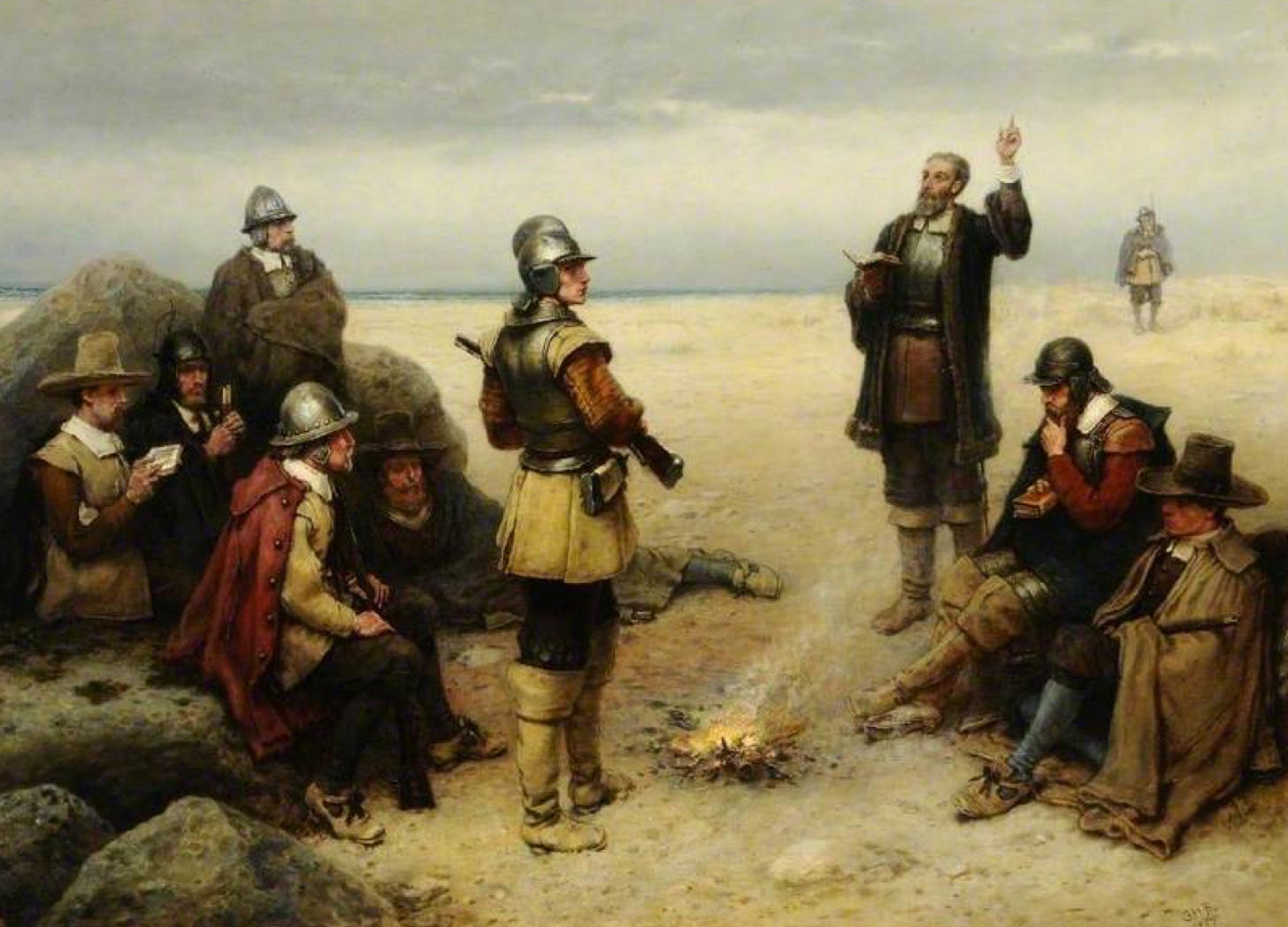
Three months after landing at the place they called New Plymouth, the English colonists we have come to call the Pilgrims, received an official visit from the paramount chief of the Wampanoag people. ‘Captain Standish and Master Williamson met the king at the brooke, with half a dozen musketeers, they saluted him, and he them, so one going over, the one on the one side, and the other on the other, conducted him to an house then in building, where we placed a greene Rugge, and three or foure Cushions, then instantly came our Governour with Drumme and Trumpet; after him, and some few Musketiers.1 A few days later, in April of 1621, the community buried the aforementioned governor ‘in the best manner they could, with some vollies of shott by all that bore arms …’2
These two anecdotes suggest that, of the fifty-odd colonists who survived the first winter at New Plymouth, twelve or more had received some sort of military training prior to the spring of 1621. Moreover, conditions in the settlement during the first four months of its existence were such that little, if any, instruction could have taken place during that period. (For one thing, half of the hundred or so people who had landed in December of 1620 had died. For another, the six or seven people who managed to avoid falling ill during this extraordinarily pestilent season could not do much more than care for the sick and bury the dead.)3
In February of the first winter, New Plymouth experienced a ‘war scare’. The sudden appearance of a group of a dozen or so Wampanoag warriors, all armed with bows, a few miles south of the settlement led the colonists to grant powers of command to Miles Standish. (Prior to that decision, the position held by Captain Standish had been entirely advisory.) Soon thereafter, men of the colony performed, with the aid of sailors from the Mayflower, the herculean task of bringing their artillery ashore and mounting them on a hill overlooking the settlement.
It is thus quite possible that, once the cannon had been emplaced, Standish proved able to prevail upon some of the men still standing to do a bit of drill. The last half of the winter, however, turned out to be much deadlier than the first. Thus, mustering a handful of men to drill in February or March would have been a much greater accomplishment than the one military project completed in the first month after landing, the building of wooden platforms for the ‘great ordinances’.
Keep reading with a 7-day free trial
Subscribe to The Tactical Notebook to keep reading this post and get 7 days of free access to the full post archives.





